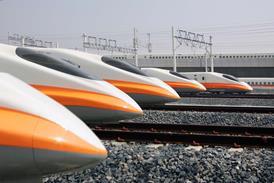Export drive expected as Chinese market loses momentum
By Railway Gazette International2019-01-11T12:10:28

CHINA: While the demand for railway technology is expected to continue at a high level for the next five years, the Chinese market has lost momentum and is not expected to grow, according to a new study by German consultants SCI Verkehr. This may put pressure on Chinese suppliers to ...
Already have an account? LOG IN
To continue…
You’ve reached your limit of content for the month
Get enhanced access to Railway Gazette news and weekly newsletters.

For almost 200 years, the Railway Gazette Group has been the leading provider of news, analysis and intelligence for the international railway industry. Our independent and authoritative content is read by operators, regulators and the supply industry in over 140 countries using a variety of tailored subscription packages.
Site powered by Webvision Cloud



